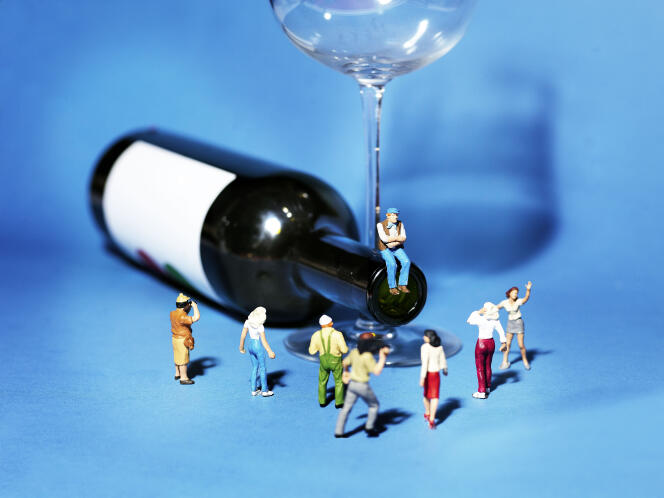


The French are on the verge of breaking a cliché. For half a century, the third national emblem has been steadily losing ground in the triptych of beret, baguette and red wine. Dry January is one of the most recent examples. This challenge, imported from across the Channel just five years ago, is gaining ground. So much so that the wine industry is worried.
Augustin Laborde is one of the few in the drinks industry benefiting from the shift. His wine store, Le Paon qui Boit ("The Drinking Peacock"), in the 19th arrondissement of Paris, is devoted to alcohol-free drinks for adults. He noted that non-alcoholic beer remains a safe bet, but that non-alcoholic wine is attracting ever more curious onlookers: "We sold two to three times more in January than in other months. In fact, we experienced what other wine merchants experience in December," said the 30-something, against a backdrop of salmon and pastel blue.
Julien Veyron, who leads the consumer surveys for CGA-NielsenIQ, nevertheless notes a "huge gap" between the desire to abstain for a month and the reality. More than half (55%) of those surveyed declared themselves ready to take up the challenge. In the end, only 18% claimed to have succeeded. That's one person in five. In a country renowned for its wine, this is no mean feat, especially as almost all those who have abstained now want to stay sober or drink less.
In fact, Dry January is just a drop in the wine bucket. Or one symptom among many of a deeper trend: The French are drinking fewer alcoholic beverages in general, and less wine in particular. The decline in consumption has been going on for a long time, almost linearly, but on a gentle slope. But if we take a step back, the decline is spectacular: In 60 years, French wine consumption has fallen by almost 70%, from over 120 liters per capita per year in 1960 to less than 40 liters in 2020. Far from abating, the trend seems to have accelerated in recent years. Just one example: In 2017, 10% of the population still drank at least one glass every day; by 2021, it was only 8%.
The future looks even drier. Several winegrowing regions are predicting major market losses. In a report published at the end of 2023, the European Commission forecasts a Europe-wide decline of 7% in production and consumption between now and 2035. But the body is careful to add that this is an "optimistic trend," with a high risk that the decline will be "higher."
One factor is of particular concern to professionals: Regular wine-drinkers are mainly older people, who are not being replaced by new generations. Many young people under 35 are distancing themselves from alcoholic beverages, or abandoning wine for beer. In less than a generation, the loss of interest is obvious. In 2002, 4.5% of 17-year-olds had never tasted alcohol. In 2020, the figure was 20%.
You have 72.28% of this article left to read. The rest is for subscribers only.
